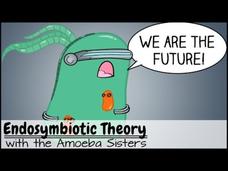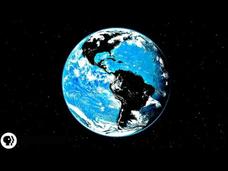Journey to the Microcosmos
The Algae That Saved an Astronaut's Life
The Algae That Saved an Astronaut's Life
Ancient Lights Media
The Chloroplast: Structure & Movement
This clip describes the structure, function, and movement of the chloroplast.
Ancient Lights Media
Cells - Components of the Cytoplasm
Cell Structure and Function Set: 3. This clip introduces the structure and function of the components of the Cytoplasm in animal and plant cells.
FuseSchool
BIOLOGY - Plant Biology - What is photosynthesis
We wouldn’t have life without photosynthesis; life processes depend upon it. Not only are photosynthetic organisms the main producers of food, but without photosynthesis Earth’s atmosphere would lose its oxygen. In photosynthesis is that...
Visual Learning Systems
Photosynthesis: Chloroplasts
Almost all life either directly or indirectly depends on one of the most important biological processes on the planet - photosynthesis. Through easy-to-understand graphics and colorful animations, the complex chemical process of...
Professor Dave Explains
Eukaryotic Cells Part 2: Plant Cells
It's not just animals that are made of cells, it's plants too! Plant cells are very similar to animal cells, but they have some stuff that animal cells don't, like chloroplasts, that allow for photosynthesis. Let's take a tour through a...
Ancient Lights Media
The Biological Effects of Tonicity
Osmosis Set: 2. This clip examines tonicity: the effect of various concentrations of solute molecules and plant cells.
Visual Learning Systems
Plant Parts: Leaves
Upon viewing the Plant Parts video series, students will be able to do the following: Recognize that plants have many parts, and that each part performs specific functions. List many different parts of plants that we eat. Describe the...
Visual Learning Systems
The Cell: Organization of the Cell
Students will learn about the discovery of cells, the development of the cell theory, and the differences between animal cells and plant cells, Animations illustrate the different parts of a cell. Other terminology includes: organelles,...
Visual Learning Systems
Cells: Plant and Animal Cells
Upon viewing the Cells video series, students will be able to do the following: Understand that cells are the basic building blocks of life. Explain the main components of the cell theory: - all organisms are made up of one or more...
Bozeman Science
Cellular Organelles
Despite their microscopic size, eukaryotic cells are probably one of the most complex systems ever! Explore the structure and function of the major organelles of eukaryotic cells — the nucleus, ER, ribosomes, golgi complex, lysosomes,...
TED-Ed
The Simple Story of Photosynthesis and Food
Meet adorable, animated chloroplasts as they produce glucose with the help of the sun. Viewers learn how carbon, oxygen, hydrogen, and electrons are combined to form carbohydrates with an engaging video. The narrator also explains how...
Curated OER
Photosynthesis: Light Reactions
This clip picks up right where the Khan Academy's Photosynthesis video left off. Chemicals such as hydrogen and compounds such as NADPH are reviewed along with details including the stroma, thylakoid, lumen, and grana. See the parts of a...
PBS
Photosynthesis | UNC-TV Science
Discover what links photosynthesis and food chains together. Scientists explore the basics of photosynthesis, including its products, during an animated activity. While watching the video, investigators also learn the importance of sugar...
Amoeba Sisters
Endosymbiotic Theory
Eukaryotes—were we born from an act of predation that backfired? Ponder this and other questions of evolution with a video from a well-written biology playlist. Topics include the origins of mitochondria and chloroplasts, unusual...
Amoeba Sisters
Specialized Cells: Significance and Examples
All cells are created equal, but some go on to do amazing things! Find out more about these super hero cells with a short video from a well-written biology playlist. Topics include specialized plant and animal cells and how cells know to...
Amoeba Sisters
Introduction to Cells: The Grand Cell Tour
Ready to begin cell biology in a grand fashion? Start the adventure using a short but thorough video from a vast biology playlist! From prokaryote to eukaryotes, Golgi to chloroplast, the narrator guides viewers through the cell membrane...
PBS
How Two Microbes Changed History
Where would we be without bacteria? As it turns out, we owe them everything! Introduce young biologists to endosymbiotic theory using an amazing video from an extensive biology playlist. Scholars discover the bacteria that may be...
Physics Girl
Why Aren't Plants Black?
In an evolutionary sense, plants seem to have it all figured out. But, do they really? The narrator of an engaging physics video that is part of a larger series questions the predominant color of plants in a short video. Content includes...
American Chemical Society
What If Humans Could Photosynthesize?
How would you fare as a plant? Learners watch a video in the ACS Reactions series that explains what would happen if humans could perform photosynthesis. They see that life would definitely be quite different!
Teacher's Pet
Photosynthesis Steps and Pathways
When studying photosynthesis, most pupils think of trees and flowers but forget about cacti. The video explains the process of photosynthesis both within a cell and the variations due to the type of plant and climate. It includes a short...
Bozeman Science
Photosynthesis
A scientific video describes photosynthesis in both plants and algae through the use of chloroplasts. It also explains the various pigments and types of chlorophyll, light reactions, and the Calvin cycle.
Crash Course
Plant Cells
Why can't plants escape prison? Because their cells were surrounded by walls. Introduce viewers to the evolution of plants with a video that discusses the differences between prokaryotic and eukaryotic cells, plant cells' organelles, and...
Amoeba Sisters
Plant Structure and Adaptations
Non-vascular plants, like moss, are able to survive on photosynthesis. A video explains plant structure for both vascular and non-vascular plants. It includes the parts of each plant and adaptations to various environments such as...














